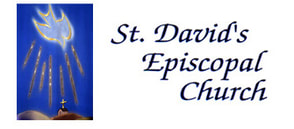Creation Care Team:: Jim Shields, Mary Moore, and Pauline Mortenson
The Mighty Earthworm. by Jim Shields
In most soils, earthworms are the single largest group of microfauna, numbering about a million worms, or 2 tons, per hectare (2 ½ acres). They move through the soil by contracting different sets of muscles and are aided by a slimy coating and bristles.
Some earthworms can regenerate a severed tail section. They are hermaphrodites, having both male and female sex organs, but cannot self-fertilize. Earthworms have 5 sets of 2 aortic arches that push blood from one part of the body and pull it back from the others in a closed circulatory system. Quite unique.
They live underground, creating complex burrow networks and improving soil fertility and drainage. They have no eyes or ears but are sensitive to light and vibrations. They breathe through their skin, which has receptors for touch, and must stay moist to survive. The presence of numerous earthworms in soil is a good indicator that the soil is healthy and well-balanced. They are an abundant and rich source of protein, and are quite flavorful if cooked properly. Only kidding.
In most soils, earthworms are the single largest group of microfauna, numbering about a million worms, or 2 tons, per hectare (2 ½ acres). They move through the soil by contracting different sets of muscles and are aided by a slimy coating and bristles.
Some earthworms can regenerate a severed tail section. They are hermaphrodites, having both male and female sex organs, but cannot self-fertilize. Earthworms have 5 sets of 2 aortic arches that push blood from one part of the body and pull it back from the others in a closed circulatory system. Quite unique.
They live underground, creating complex burrow networks and improving soil fertility and drainage. They have no eyes or ears but are sensitive to light and vibrations. They breathe through their skin, which has receptors for touch, and must stay moist to survive. The presence of numerous earthworms in soil is a good indicator that the soil is healthy and well-balanced. They are an abundant and rich source of protein, and are quite flavorful if cooked properly. Only kidding.
by Pauline Mortenson, June 2024
Do you know which bird does the following: Flies a thousand miles without resting or eating... They remember every single flower they visit...
You’re correct...the hummingbird
But...they’re survival is contingent on: Pesticides that kill off insects which is necessary for a hummingbird’s diet... Habitat loss is being impacted by logging, continued urbanization, agricultural development, resource extraction and energy exploration... Climate change is causing when flowers bloom especially during a hummingbirds migration risking starvation...
For example:
The Rufous Hummingbird breed as far north as Alaska then fly to southern Mexico for the winter...but...they are vulnerable to climate change. The Costa’s Hummingbird survive in the desert feeding on native plants and tiny insects...but...habitat is being cleared for development in Arizona and California.
Calliope Hummingbirds are the smallest breeding bird in North America and smallest long-distance traveler in the world...but...they’re at risk from pesticide use, restricted migrating range and invasive plants killing native flowers.
We have a lot of work ahead of us to protect our feathered friends!
Do you know which bird does the following: Flies a thousand miles without resting or eating... They remember every single flower they visit...
You’re correct...the hummingbird
But...they’re survival is contingent on: Pesticides that kill off insects which is necessary for a hummingbird’s diet... Habitat loss is being impacted by logging, continued urbanization, agricultural development, resource extraction and energy exploration... Climate change is causing when flowers bloom especially during a hummingbirds migration risking starvation...
For example:
The Rufous Hummingbird breed as far north as Alaska then fly to southern Mexico for the winter...but...they are vulnerable to climate change. The Costa’s Hummingbird survive in the desert feeding on native plants and tiny insects...but...habitat is being cleared for development in Arizona and California.
Calliope Hummingbirds are the smallest breeding bird in North America and smallest long-distance traveler in the world...but...they’re at risk from pesticide use, restricted migrating range and invasive plants killing native flowers.
We have a lot of work ahead of us to protect our feathered friends!
Genesis 2:15 “The Lord God took the man and put him in the Garden of Eden to work it and take care of it.”
While for centuries the above statement from Genesis was cited as evidence for man’s right to be in charge and to exploit nature, it is now interpreted to mean exactly what it says. It is our responsibility to take care of the earth. As such, the Episcopal Church offers this vision and these goal statements for the Creation Care Ministry.
Vision statement: The Jesus Movement is the ongoing community of people whose lives are centered on Jesus of Nazareth. We follow him into loving, liberating, life-giving relationship with God, with each other and with Creation. (my underlining)
Goals -
Loving -Goal #1 - Create and sustain a network of Episcopalians dedicated to the care and protection of the whole Creation, especially by providing grants and cultivating circles for Story Sharing among practitioners in local and regional ministries.
Liberating - Goal #2 - Stand in solidarity with the most vulnerable victims of the impact of climate change - particularly women, poor people, and people of color - as part of seeking the liberation and flourishing of all God's people.
Life-Giving - Goal #3 - Set climate change mitigation benchmarks as individuals and as a church, in order to live more simply, humbly, and gently on the Earth.
How does this play out at Saint David’s? While we have three visible members in our Creation Care Ministry, in reality this ministry includes many, perhaps even most, of our parishioners. Anyone who takes actions that are designed to help the environment should consider himself/herself to be part of this ministry. Look again at Goal #3: “as individuals and as a church … live more simply, humbly, and gently. "There are three major ways by which we do this, 1) not over-consuming goods or energy, 2) directly helping plants and animals, and 3) restoring.
Here is a list of examples and how each action helps. (Also the names of some parishioners known by me to take a particular action. I am sure that you could provide many more names.)
*Plant a vegetable garden and/or buy local produce - cuts down on transportation distances (i.e. on fuel consumption) and can also provide food for animals such as bees. (Denise, Norma)
*Plant a flower garden - helps pollinators and birds. (Pauline, Jean C.) Note: Be careful NOT to buy flowers that have been treated with chemicals that kill bees.
*Plant native species instead of non-native species - helps the existing ecosystem.
*Plant trees - a restorative action (Norma, Harvey)
*Feed birds - directly helps birds & consequently their ecosystems. (Jim)
*Consolidate errands to cut down on driving - reduces fuel consumption, means fewer pollutants being spewed out into the atmosphere.
*Hang clothes outside to dry when possible - cuts down energy consumption.
*Before turning up the thermostat in cold weather, try wearing a sweater first. - cuts down on fuel consumption.
*River cleanup - helps plants and animals by removing pollutants. (Marcel, Virginia, Jim, Harvey)
*Walk when possible - cuts down on gas consumption; is a way to enjoy nature
The list could go on, but you get the point. Awareness is the key. If we are aware of the consequences of our actions, we can be more intentional about making choices that are good for the environment. Thank you for all you do! Come join us on one of our hikes! And check out our bulletin board.
While for centuries the above statement from Genesis was cited as evidence for man’s right to be in charge and to exploit nature, it is now interpreted to mean exactly what it says. It is our responsibility to take care of the earth. As such, the Episcopal Church offers this vision and these goal statements for the Creation Care Ministry.
Vision statement: The Jesus Movement is the ongoing community of people whose lives are centered on Jesus of Nazareth. We follow him into loving, liberating, life-giving relationship with God, with each other and with Creation. (my underlining)
Goals -
Loving -Goal #1 - Create and sustain a network of Episcopalians dedicated to the care and protection of the whole Creation, especially by providing grants and cultivating circles for Story Sharing among practitioners in local and regional ministries.
Liberating - Goal #2 - Stand in solidarity with the most vulnerable victims of the impact of climate change - particularly women, poor people, and people of color - as part of seeking the liberation and flourishing of all God's people.
Life-Giving - Goal #3 - Set climate change mitigation benchmarks as individuals and as a church, in order to live more simply, humbly, and gently on the Earth.
How does this play out at Saint David’s? While we have three visible members in our Creation Care Ministry, in reality this ministry includes many, perhaps even most, of our parishioners. Anyone who takes actions that are designed to help the environment should consider himself/herself to be part of this ministry. Look again at Goal #3: “as individuals and as a church … live more simply, humbly, and gently. "There are three major ways by which we do this, 1) not over-consuming goods or energy, 2) directly helping plants and animals, and 3) restoring.
Here is a list of examples and how each action helps. (Also the names of some parishioners known by me to take a particular action. I am sure that you could provide many more names.)
*Plant a vegetable garden and/or buy local produce - cuts down on transportation distances (i.e. on fuel consumption) and can also provide food for animals such as bees. (Denise, Norma)
*Plant a flower garden - helps pollinators and birds. (Pauline, Jean C.) Note: Be careful NOT to buy flowers that have been treated with chemicals that kill bees.
*Plant native species instead of non-native species - helps the existing ecosystem.
*Plant trees - a restorative action (Norma, Harvey)
*Feed birds - directly helps birds & consequently their ecosystems. (Jim)
*Consolidate errands to cut down on driving - reduces fuel consumption, means fewer pollutants being spewed out into the atmosphere.
*Hang clothes outside to dry when possible - cuts down energy consumption.
*Before turning up the thermostat in cold weather, try wearing a sweater first. - cuts down on fuel consumption.
*River cleanup - helps plants and animals by removing pollutants. (Marcel, Virginia, Jim, Harvey)
*Walk when possible - cuts down on gas consumption; is a way to enjoy nature
The list could go on, but you get the point. Awareness is the key. If we are aware of the consequences of our actions, we can be more intentional about making choices that are good for the environment. Thank you for all you do! Come join us on one of our hikes! And check out our bulletin board.


